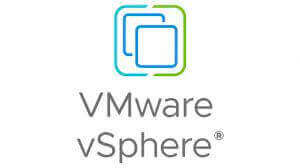Introduction:
Statistics is a part of mathematics that is worried about gathering, coordinating, and deciphering Data to address explicit qualities. Statistics is assumed as the study of gaining from Data, which goes about as a proportion of properties of a given example.
The Data utilized here can be subjective (downright) or quantitative (consistent or discrete sort). By involving Statistics for Data Analytics, associations can find patterns and examples inside Data, which are then applied to common-sense use cases for business development. The primary goal is to tackle difficult issues that could never have been conceivable without Data.
Kinds of Statistics
The term Statistics has a few fundamental implications, and when connected with mathematics, it is comprehensively grouped into two sorts:
-
Engaging Statistics
-
Inferential Statistics
1) Engaging Statistics
Engaging Statistics depict fundamental highlights of Data to give an outline of Enormous Data, as it helps with summing up, exploring, and imparting in a significant way.
At the point when associations utilize Unmistakable Statistics for Data Analytics, they can portray the proportion of focal propensity and circulation of Data. In any case, it gives no thought of future occasions.
To find out about Elucidating Statistics visit this connection.
2) Inferential Statistics
Inferential Statistics are utilized to build forecasts, and derivations and settle on choices from Data. It additionally helps with bringing business bits of knowledge into gathered Data to achieve authoritative objectives, which could be speculative, having haphazardness and varieties from the ideal outcome.
To find out about Inferential Statistics visit this connection.
Advantages of Statistics for Data Analytics
Involving Statistics for Data Analytics and Data mathematics can furnish you with the accompanying advantages:
-
Statistics help with acquiring bits of knowledge into business activities, making it a significant part of any Data mathematics and Investigation project life cycle.
-
Aside from understanding Factual measures, it likewise assumes an imperative part in Data pre-processing and highlight designing.
-
It helps in imagining numbers to comprehend examples and patterns existing in quantitative Data
Work on ETL utilizing Hevo's No-code Data Pipeline
Hevo Data is a No-code Data Pipeline that offers a completely overseen answer for set up Data joining from 100+ Data Sources (counting 40+ Free Data Sources) and will allow you straightforwardly to stack Data to an Data Distribution center like Snowflake, Amazon Redshift, Google BigQuery, and so on or your preferred objective.
It will robotize your Data stream in minutes without composing any line of code. Its shortcoming lenient design ensures that your Data is secure and predictable. Hevo gives you a genuinely effective and completely robotized answer for overseeing Data continuously and consistently having investigation prepared Data.
We should Check out at A few Remarkable Elements of Hevo:
-
Completely Made due: It requires no administration and upkeep as Hevo is a completely robotized stage.
-
Data Change: It gives a basic point of interaction to consummate, change, and improve the Data you need to move.
-
Constant: Hevo offers continuous Data movement. In this way, your Data is generally prepared for Analytics.
-
Mapping The executives: Hevo can naturally identify the outline of the approaching Data and guides it to the objective diagram.
-
Live Observing: High level checking gives you a one-stop view to observe every one of the exercises that happen inside pipelines.
-
Live Help: Hevo group is accessible nonstop to stretch out extraordinary help to its clients through visit, email, and backing calls.
Basic Terms Utilized in Statistics for Data Analytics
To be more acquainted with the force of Statistics, one should know the accompanying fundamental terms which are in many cases utilized in Statistics for Data Analytics:
-
Likelihood
-
Populace and Test
-
Circulation of Data
-
The Proportion of Focal Propensity
-
Fluctuation
-
Focal Breaking point Hypothesis
-
Contingent Likelihood and P-Worth
1) Likelihood
Likelihood, in basic terms, is the opportunity or event of the ideal outcome. As such, it is assuming opportunities for an irregular occasion.
For example, in a dice game, getting 6 in a solitary roll, a player has a sixteenth (16.67%) chance of winning the bonanza. Similarly, involving Statistics for Data Analytics to find the probability of an occasion helps in ordering classes by their likelihood.
2) Populace and Test
The Populace is a finished arrangement of Data and the example is a subset of Populace Data. To perform Factual tests on populace Data calls for additional investment and cost, which becomes wasteful, along these lines it is constantly performed on examples of Data to figure out related proportions of populace.
At the point when you use Statistics for Data Analytics, these actions acquired as experimental outcomes are utilized to acquire further bits of knowledge into the populace.
3) Dissemination of Data
It is enthusiastically prescribed to comprehend the spread of Data to assess the Skewness and Kurtosis, which tells that Data is one-sided. In such cases, one ought to apply various Data changes.
One of the broadly involved techniques while applying Statistics for Data Investigation is the standardization of Data to look like a ringer shape. Standardization frequently circulates Data evenly, scaling them somewhere in the range of 0 and 1.
4) The Proportion of Focal Inclination
Focal Inclination is a worth that decides the focal worth of the given dataset. The Focal Inclination is summed up by 3 terms: Mean, Middle, and Mode. It becomes urgent to legitimize when to involve a specific measure for a given Data.
-
Mean is the math normal of a given dissemination and is profoundly impacted on the off chance that Data consists of exceptions.
-
Middle is without a doubt the center worth of a given set and isolates Data into equal parts. It is impervious to skewness and doesn't get impacted by anomalies.
-
Mode addresses the most successive worth of the dataset. Data can be multimodal assuming there is more than one worth with a similar recurrence.
-
While involving Statistics for Data Investigation, Mean is favored when Data is evenly appropriated. In any case, when Data has slanted qualities or ordinal sort, the Middle ought to be the ideal decision, and in the event that the Data type is absolute, the Mode is the most ideal decision.
5) Changeability
In Statistics, the scattering of Data from one another is alluded to as changeability. It gives a degree to which Data can be extended or crushed. It tends to be better perceived in the event that we do a univariate Analytics of highlights. A couple of key terms to know about while involving Statistics for Data Investigation are:
Interquartile Reach [IQR]: The distinction between the biggest and littlest worth is known as Reach. On the off chance that the Data is parcelled into four sections, it is named a Quartile, and the distinction between the third and first Quartile is known as IQR. A container plot is utilized in such cases to decide Spread, Exceptions, and IQR.
Standard Deviation: A value that shows how much variety in populace Data is named Populace Standard Deviation. In a given circulation, the Standard Deviation is utilized to find how far one worth lies from the other. In the real case, the example populace is determined where n is the size of the example and n-1 is viewed as test size.
Fluctuation: A typical squared deviation on populace is named the Change. In a given conveyance, the Fluctuation esteem lets us know the level of spread of Data. Higher Change demonstrates that Data focuses are found away from the Mean.
6) Focal Cut off Hypothesis
Pierre-Simon Laplace, in 1830 presented the main standard form of As far as possible Hypothesis. It gives understanding into populace Data by utilizing the mean of the examples, and assuming the mean worth of tests is plotted, it moves toward an Ordinary Circulation that holds regardless of the sort of dispersion of populace.
It additionally expresses that the mean of means will be around equivalent to the mean of test implies. This hypothesis assumes a significant part when you use Statistics for Data Investigation and Data mathematics.
7) Restrictive Likelihood and P-Worth
Restrictive Likelihood varies marginally from likelihood as here a result is normal given a social occasion has proactively happened. This idea is stretched out in Bayes hypothesis by which the gullible Bayes calculation is planned and applied for text arrangement.
Measurable tests frequently allude to the P-esteem where the likelihood of an occasion is determined considering speculation conditions. On the off chance that the p-esteem is not exactly the huge worth (normally 0.05), the invalid speculation is dismissed; else the invalid speculation is acknowledged
Conclusion:
This article discusses the essential job and significance of Statistics for Data Investigation and Data mathematics. It gives a concise outline of Measurable terms and makes sense of their sorts and advantages. Besides, knowledge of the terms Statistics and the meaning of speculations is depicted, as it is vital in Data mathematics and Analytics.
Statistics assume a significant part in understanding a given element's way of behaving and the connection they acquire. Data mathematics and Analytics likewise include Data on cutting edge Arithmetic and Programming, and subsequently Statistics fills in as the most important move towards understanding the Data mathematics and Analytics process. The outcomes acquired by involving Statistics for Data Analytics have helped in producing bits of knowledge from Data that drive business development in the business to remain ahead in the serious world.






.png_202212260631.png_202212260729.png)
.png_202212260639.png)




.png_202211020206.png)
.png_202210310641.png)
.png_202210120420.png)
.png_202209130241.png)
.png_202210140232.png)